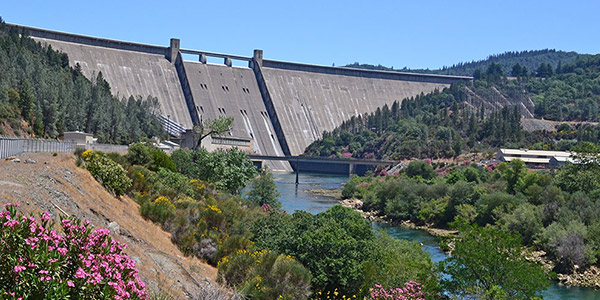By Hudson Sangree
CAISO’s summer load forecast predicts an abundance of hydroelectric power but constraints on natural gas supplies, the ISO’s Board of Governors heard Wednesday.
As of April 1, California snowpack is over 160% of normal this year, Bob Emmert, the ISO’s manager of interconnection resources, told the governors. That’s far different from last year, when it was 51% of normal, he said.
“This year we have a pretty robust snowpack condition,” Emmert said.
That means there may be an excess of runoff in the spring but snowmelt will continue well into the summer to power hydroelectric plants, he said.
The picture isn’t entirely rosy, however.
There’s been a 2,061-MW reduction in dispatchable resources because of retirements and mothballing of natural gas plants, he said. That could be a problem when demand remains high after solar power fades in the evening.
Almost all the low operating margin conditions in CAISO’s models occur during minimal or zero solar output, he said. ISO staff run 2,000 scenarios to project summer load and possible problems. The computers take several days to complete the task, Emmert said.
Continuing problems at the Aliso Canyon natural gas storage facility in Southern California could add to the inability of resources to meet peak summer demand, Emmert said. That could prove especially troubling for local reliability in Southern California, he said.
Reporting Rules for Excess BTM
The board also approved a measure standardizing how load-serving entities report load values to the ISO in the face of proliferating behind-the-meter generation.
In pushing for the measure, staff pointed to the inconsistency of some LSEs reporting their customers’ “net load” (energy transmitted through the retail meter minus any metered energy exported back to the grid) and others reporting “gross load” (the amount of energy customers consume directly from the grid net of any energy consumed from BTM output).
“Reported load values are key inputs to many of the ISO’s settlement calculations,” CAISO management said in a memo to the board.
In that memo, CAISO explained that “excess” BTM production — which represents the amount of energy exported to the grid when a customer’s BTM generation exceeds its on-site load — should not be included in gross load figures sought by the ISO.
The new measure would clarify Tariff language to ensure consistent reporting of gross load and specify that scheduling coordinators do not net excess BTM production from the gross load figures reported to CAISO. The measure would also add a Tariff definition for excess BTM production and require that LSEs report it to the ISO.
“Currently, the magnitude of this problem is relatively small, but as the grid continues to increase adoption of behind-the-meter solar resources, the impact of these inconsistencies and reporting problems will grow,” the ISO said.
California last year passed a law requiring all new construction to include rooftop solar beginning in 2020.
‘Charging Hard’
In his update to the board, CEO Steve Berberich said CAISO is “charging hard” toward the July 1 launch of RC West, the ISO’s new reliability coordination service that will operate in much of the West after Peak Reliability winds down operations later this year. (See CAISO RC Wins Most of the West.) The staggered rollout begins with California and northern Mexico and expands to balancing authority areas in other states in November after two months of shadow operations.
Berberich also said the ISO experienced a record solar output of 11,350 MW in May along with a record wind output of 5,309 MW, moving California closer to achieving its ambitious green energy goals.
Robert Mullin contributed to this article.




